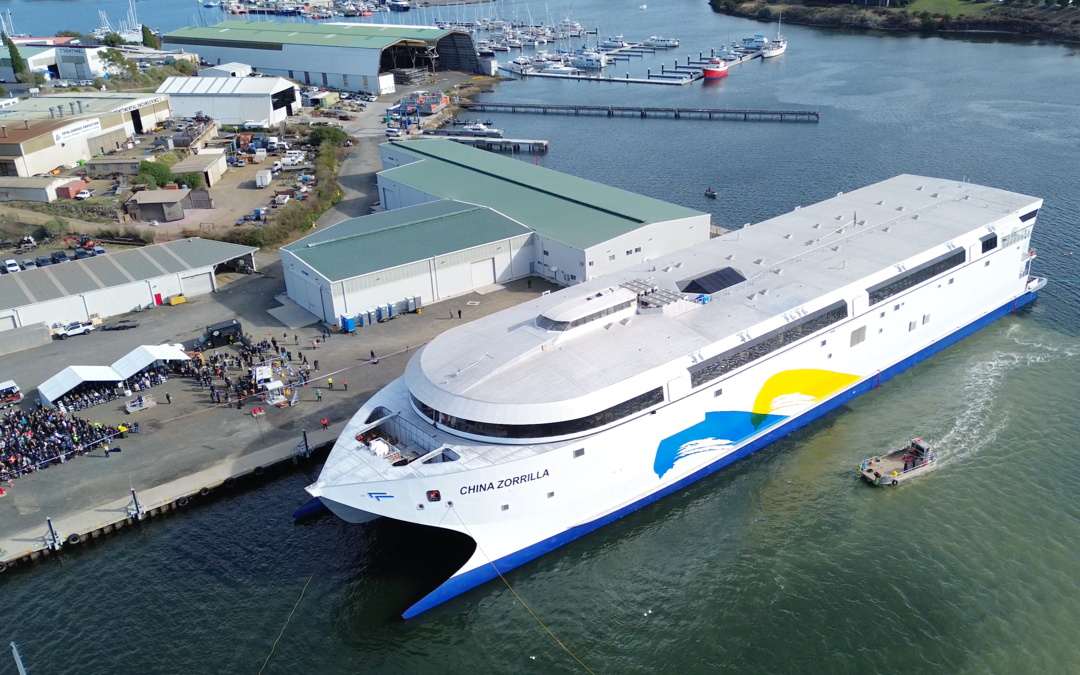World’s Largest Electric Ship Debuts in Australia, Built by Incat
Tasmania’s Incat launches the world’s largest battery-electric ferry, marking a major leap in sustainable shipbuilding.
Australian shipbuilder Incat launched the world’s largest battery-electric ship on Friday, marking a significant milestone in the global push toward sustainable maritime transport.
Hundreds gathered at the company’s Hobart shipyard to witness the launch of Hull 096, a 130-metre ferry built for South American operator Buquebus.
The vessel, which will operate between Buenos Aires, Argentina, and Uruguay, can carry up to 2,100 passengers and 225 vehicles entirely on electric power.
“This is a historic day – not just for Incat, but for the future of maritime transport,” said Incat Chairman Robert Clifford. “This ship changes the game.”
Equipped with more than 250 tonnes of batteries and an Energy Storage System (ESS) boasting over 40 megawatt-hours of capacity, Hull 096 sets a new global benchmark for maritime electrification.
The ESS, developed in partnership with Finnish engineering firm Wärtsilä, powers eight electric waterjets and is the largest of its kind installed on a vessel to date.
“We are proud to have collaborated with Incat and Buquebus,” said Roger Holm, President of Wärtsilä Marine. “Ship electrification is key to enabling the sector’s transition to net-zero emissions.”
Reconfiguring for a Cleaner Future
Originally designed to run on LNG, the ship was reconfigured into a fully electric vessel after discussions between Clifford and Buquebus President Juan Carlos López Mena.
“When we were evaluating this new vessel, Robert told me, ‘The next ship I deliver to you will be 100 percent electric,’” said López Mena. “Together, we made history.”
The launch was welcomed by Tasmanian Premier Jeremy Rockliff, who praised the ship as a globally significant achievement in engineering and sustainability. “Incat epitomises what it means to be Tasmanian as they quietly pursue the extraordinary,” he said.
Final work on the vessel’s interior, including a 2,300-square-metre duty-free retail deck – the largest on any ferry worldwide – will continue in the coming months, alongside battery installation and sea trials on the River Derwent.
“This is a proud day for Tasmania and Australian manufacturing,” said Incat CEO Stephen Casey. “Hull 096 proves that large-scale, low-emission transport solutions are not only possible – they are ready now.”
With its record-breaking dimensions and emissions-free operation, the vessel is considered one of the most significant single export projects in Australia’s manufacturing history.
“This ship puts Tasmania and Australia firmly on the world stage,” Clifford said. “And this is only the beginning.”
Nirmal Menon
Related posts

Subscribe
Error: Contact form not found.


